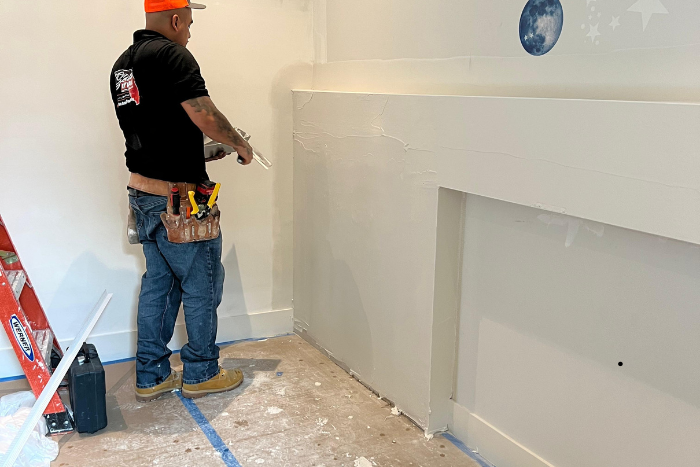
Have you ever had a favorite shirt, blanket, or pair of jeans that looked old and worn out? Don’t toss it! You can save it. Restoring old fabrics isn’t as hard as it sounds. Plus, it saves money and gives your favorite things a new life.
This guide will show you everything. From easy repair techniques to essential tips, you’ll learn how to fix damaged textiles like a pro. Ready to get started? Let’s go.
Why Fix Your Worn-Out Textiles?
Restoring old clothes, throws, or fabric isn’t just about DIY fun. It has real benefits. Let’s explore why you should start.
Save Money
Let’s be honest. Buying new clothes or blankets adds up fast. Repairing them is a cheaper option.
Save the Planet
Every year, billions of textiles pile up in landfills. Throwing out damaged fabrics creates more waste. Fix them instead.
Keep Sentimental Items
Your favorite sweater or your child’s first pair of shoes? They hold memories. Restoration can keep those moments alive.
Get Creative
Who says fixing fabric has to be boring? Add embroidery, patches, or unique designs while you’re at it.
See? Restoring isn’t just about fixing holes. It’s about saving money, saving memories, and being creative. Sounds like a win-win, doesn’t it?
Gather Your Tools Before You Start
You can’t fix something without the right tools. Gather these supplies first. They’ll make the process much easier.
Must-Have Tools
Here’s your basic checklist:
- Needles & Thread: Necessary for hand-sewn repairs.
- Sewing Machine: Makes stitching faster and easier.
- Fabric Glue: Perfect for areas that are tough to sew.
- Patch Fabric: Grab a scrap piece to use for repairs.
- Scissors: The best tool for cutting fabric.
- Measuring Tape: Keep your patches even and accurate.
Bonus Supplies
Want to go all in? Add these to your list:
- Embroidery Thread: Great for decorative fixes.
- Fabric Dye: A quick fix for faded colors.
- Iron: Helps set and smooth your patched areas.
Having these supplies ready before you start will save you so much time. Trust me.
Common Textile Problems & Their Solutions
Fabric issues are a normal part of life. They happen to your favorite clothes, throws, or blankets all the time. Here are common problems and how to fix them.
- Holes & Tears
These are a nightmare, right? Tears happen from years of wear or a random snag.
How to Fix It
- Grab a patch from a similar fabric.
- Sew it over the hole. A little hand-sewing or machine stitching works great.
- Fraying Edges
Fraying edges make things look neglected. But don’t worry, they’re easy to fix.
How to Fix It
- Use fray-stop liquid on the edges.
- Or hem the edges using a sewing machine to keep them from unraveling.
- Discoloration & Stains
Stains happen. Old fabrics lose their color over time. It’s fixable, though.
How to Fix It
- Treat stains with a gentle stain remover.
- If the color is too far gone, try a bit of fabric dye to refresh the look.
- Fabric Stretching
Fabric can lose shape after years of wear, especially cotton or knit items.
How to Fix It
- Wash with warm water and reshape by hand.
- Fabric stabilizers can also help fabrics maintain their original form.
- Loose Seams
Seams can come undone with time or stress. Loose stitching can lead to bigger problems if ignored.
How to Fix It
- Just sew the seam back together with a needle or sewing machine.
- Double stitching adds extra durability for longer wear.
Textile repairs can seem intimidating, but they’re not rocket science. Follow these quick fixes, and you’ll get the hang of it.
Tips to Make Repairs Easier
Want to make your restoration projects go smoother? Here are a few expert tips to save you time and frustration.
Work in Good Light
Bad lighting makes it harder to spot holes or align patches. Trust me—work in a well-lit area.
Test Your Repairs First
Before you sew or glue anything to your favorite fabric, try it on a scrap piece first.
Be Patient
Rushing through repairs will only lead to mistakes. Take your time. Good things take time.
Stick to Quality Supplies
Cheap materials won’t last. Invest in good threads, patches, and tools for long-lasting results.
Learn as You Go
Don’t worry if you’re not perfect at first. Watch tutorials or read more if you need guidance.
These tips can save you a lot of headaches. Trust the process and take your time. You’ve got this.
Restore with Style
Here’s the fun part. Your repairs can be creative. Don’t just fix fabric—make it uniquely you.
Think about Patchwork Repair, embroidery, or adding color with dye. Your clothing or fabric can be a canvas for creativity.
Imagine a worn-out pair of jeans with colorful patches or a throw blanket with cute hand-stitched designs. Stylish, right?
Restoration isn’t just about fixing; it’s about showing off personality. Add flair while you’re at it.
Final Thoughts
Fixing your favorite textiles is easier than you think. And it’s worth it. Whether it’s a frayed edge, a hole, or a worn-out seam, you can save money, time, and waste by repairing your fabric.
Plus, you can add personal style and creativity to every Drywall Finish Repair. With simple tools and a bit of effort, anything is possible.
Don’t stress about being perfect. Every patch, stitch, or repair tells a story. It adds charm and character to your favorite items.